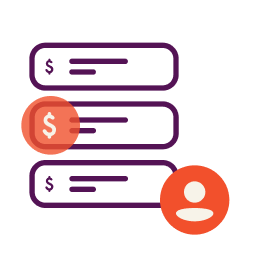Retail businesses often take a lot of risk. Business owners manufacture or buy products hoping to sell them in the future. Sometimes sales come quickly, and sometimes it can take weeks or months (and some deep discounts or heavy promotion) to make a sale.
And even established retail businesses need to regularly fund advertising and marketing campaigns so sales don’t slack off.
For many small business owners in the retailer space, having access to financing is one of the key ways they ensure they can pay for the expenses they need to cover to keep the doors of their traditional or online store open for business.
What Is Working Capital And Why Is It Important?
The term “working capital” generally refers to the amount of cash or cash equivalents on had to pay for the day-to-day expenses of the business. Ask your accountant and she’ll likely tell you that you can subtract current liabilities from current assets to arrive at the amount of working capital the business has.
Ask a retailer, and he’ll tell you that working capital keeps products on the shelves, lights on in the store and advertising to keep shoppers coming through the door. Many retail businesses need to spend heavily on inventory and that requires a lot of working capital. That’s true of both bricks and mortar retail stores, as well as ecommerce businesses also need to make sure inventory is available for sale.
Advertising, labor, inventory, rent and other expenses add up quickly and all can fall under the umbrella of working capital.
How Smart Retail Businesses Are Using Working Capital Loans To Grow
Retailers have to walk a fine line on managing inventory. Too much and they will run into overstock situations which may require discounting prices to move excess inventory. Too little and they will face stockouts, where not enough product is available to meet customer demand.
Either way, it’s not unusual for entrepreneurs in the retail space to need financing to make sure the right amount of products are available at any given time. Most businesses also encounter at least some seasonal demands for inventory. They must increase inventory before important seasonal events like the Christmas holidays, Halloween, or the beginning of summer, for example. Or a popular item may take off suddenly and the business owner needs to get more in stock while customers want it.
And it’s not just inventory that requires an outlay of cash. The business may need to hire more employees during certain seasons, for example, or other costs may increase, such as utilities during a hot summer or cold winter.
Advertising and marketing also require significant upfront expenses. Without it, sales can quickly slow down. Businesses often turn to online advertising which may require a serious financial commitment to reach customers and stay in front of them.
Having access to business financing will make it easier for business owners to cover regular business expenses when cash flow isn’t sufficient, or when the business doesn’t want to sink all its cash into one expense and be forced to skimp on another.
What Is The Difference Between Working Capital And Term Loans?
Working capital loans are typically short-term loans and may last a few weeks to a few months. Term loans refer to a lump sum of money paid back over time, usually with equal payments.
That said, there’s no single type of working capital loan. These loans may include:
- Short-term loans
- Lines of credit
- Invoice financing
- Accounts receivable financing
- Ecommerce financing
- Certain SBA loans
These financing options may come from traditional lenders like banks or from online lenders.
Is A Working Capital Loan Also Called A Cash Flow Loan?
Yes, a working capital loan may also be called a cash flow loan because it helps cover the cash flow needs of the business. Just as there isn’t a single type of working capital loan there isn’t a single type of cash flow loan. In either case, the funding is used to cover working capital needs.
What Kinds Of Businesses Require The Most Working Capital?
Retail businesses are certainly one of the types of businesses that have significant need for working capital. Others include real estate, health care, automotive and transportation.
How Can Retail Business Improve Working Capital?
Working capital management requires constant attention to business financials and key metrics. The “operating cycle” or “capital cycle” refers to the time it takes from when a business purchases inventory to when it sells it. A shorter capital cycle can save the business money and reduce the need for longer-term financing.
How do you get there? A few ideas to consider:
- Negotiate better terms with manufacturers. You may be able to negotiate lower costs with manufacturers, or a lower down payment.
- Leverage vendor credit. You may be able to purchase some of your inventory or supplies with payment terms of say, net-60, giving your business sixty days to pay.
- Improve inventory management. Inventory management software and workflow systems can offer insights that can help you better understand what inventory your business has on hand as well as what’s moving, and what’s not. With time it may help you avoid stockouts or overstocks.
- Reduce business expenses and operational costs. Reducing unnecessary expenses and fine tuning operational costs allows you to free up capital to deploy to where it is needed most.
- Leverage financing. Short-term financing can allow you to cover business needs and pay for them later. Of course, interest expenses reduce profits so you need to make sure it makes sense for your business.
What Are The Benefits Of Working Capital Loans?
As mentioned earlier, the term working capital loans refers to several types of small business loans and financing options. While each one differs, they typically have the following benefits in common:
Flexible use. The business can use loan proceeds to pay for a variety of day-to-day expenses.
Flexible repayment. Some of these loans offer lower payment options or payments that fluctuate in relation to sales volume.
Fast funding. Many, though not all, working capital funding options can be approved and funded quickly; sometimes in a few hours or days depending on the lender.
Best Working Capital Loans for Retail Businesses
There are several types of working capital financing you can consider for your business:
Lines of Credit
Access to a business line of credit can give your business enormous flexibility. Borrow what you need when you need it.
Short-term Loans
When you know how much you need to borrow, and for how long, a term loan can be useful. Short-term loans often carry repayment periods of 3—18 months.
Business Credit Cards
While business credit cards are a convenient way to pay for purchases, they can also be a good option for short-term financing, especially when they carry low interest rates. (0% APR intro offers are the best deal, and may be available for new purchases and/or balance transfers.)
Ecommerce Financing
Whether your retail business is fully online, or has an ecommerce business component, you may want to consider ecommerce financing.
SBA Loans
For the most part the SBA doesn’t make loans, instead it guarantees them. (The exception is SBA disaster loans, including certain pandemic relief loans.) There are a number of different types of SBA loans that may be used for working capital. SBA loans typically require good credit scores and the application process can take 1—3 months.
This article was originally written on October 7, 2022.



Have at it! We'd love to hear from you and encourage a lively discussion among our users. Please help us keep our site clean and protect yourself. Refrain from posting overtly promotional content, and avoid disclosing personal information such as bank account or phone numbers.
Reviews Disclosure: The responses below are not provided or commissioned by the credit card, financing and service companies that appear on this site. Responses have not been reviewed, approved or otherwise endorsed by the credit card, financing and service companies and it is not their responsibility to ensure all posts and/or questions are answered.